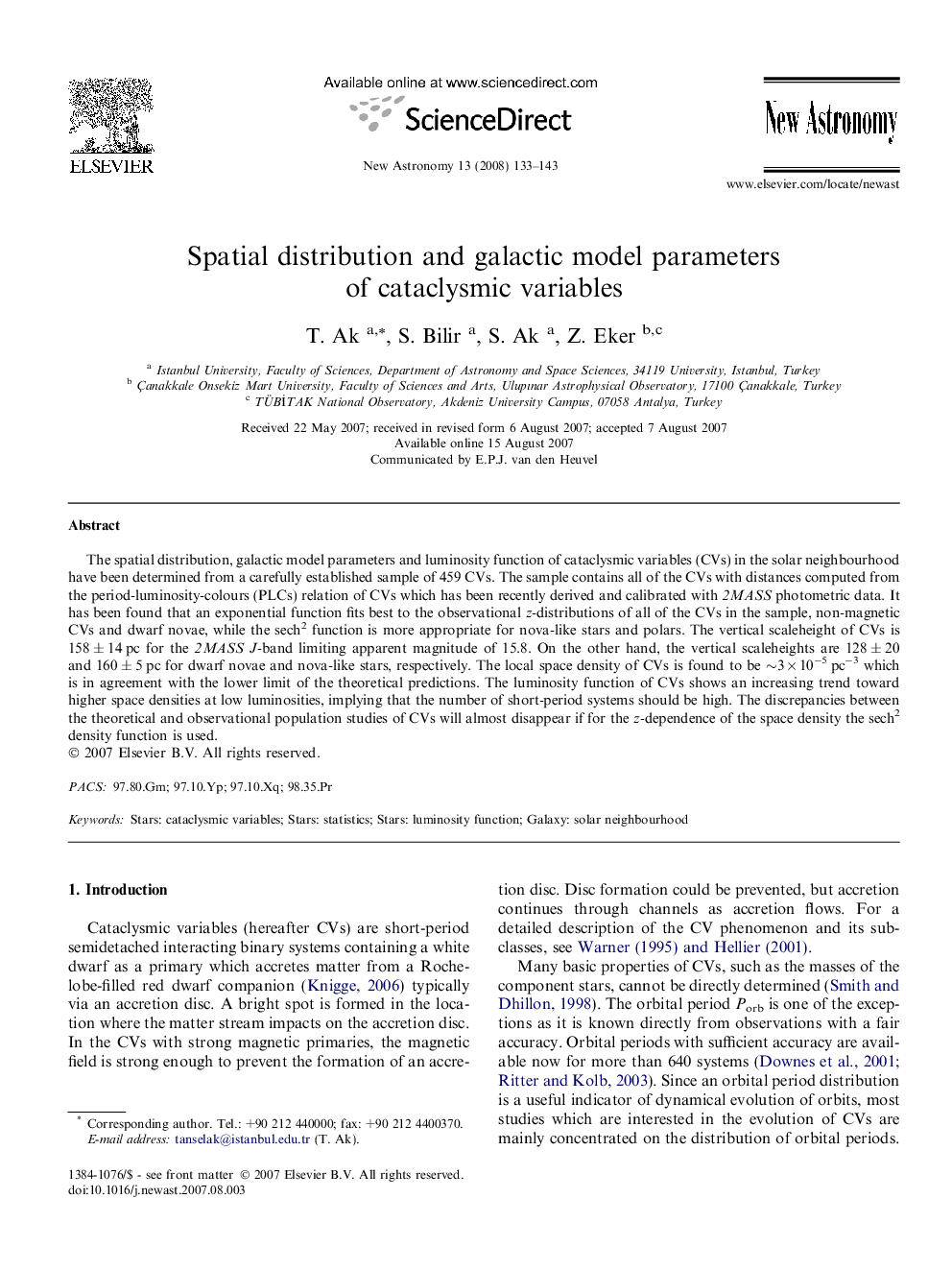| Article ID | Journal | Published Year | Pages | File Type |
|---|---|---|---|---|
| 1779711 | New Astronomy | 2008 | 11 Pages |
Abstract
The spatial distribution, galactic model parameters and luminosity function of cataclysmic variables (CVs) in the solar neighbourhood have been determined from a carefully established sample of 459 CVs. The sample contains all of the CVs with distances computed from the period-luminosity-colours (PLCs) relation of CVs which has been recently derived and calibrated with 2MASS photometric data. It has been found that an exponential function fits best to the observational z-distributions of all of the CVs in the sample, non-magnetic CVs and dwarf novae, while the sech2 function is more appropriate for nova-like stars and polars. The vertical scaleheight of CVs is 158 ± 14 pc for the 2MASS J-band limiting apparent magnitude of 15.8. On the other hand, the vertical scaleheights are 128 ± 20 and 160 ± 5 pc for dwarf novae and nova-like stars, respectively. The local space density of CVs is found to be â¼3 Ã 10â5 pcâ3 which is in agreement with the lower limit of the theoretical predictions. The luminosity function of CVs shows an increasing trend toward higher space densities at low luminosities, implying that the number of short-period systems should be high. The discrepancies between the theoretical and observational population studies of CVs will almost disappear if for the z-dependence of the space density the sech2 density function is used.
Related Topics
Physical Sciences and Engineering
Physics and Astronomy
Astronomy and Astrophysics
Authors
T. Ak, S. Bilir, S. Ak, Z. Eker,
